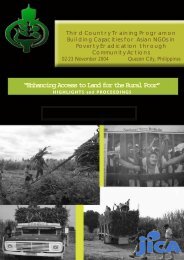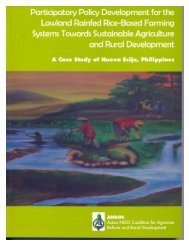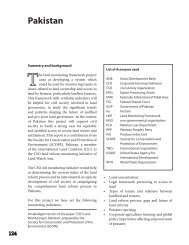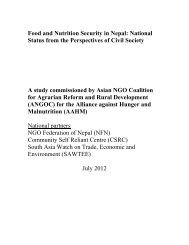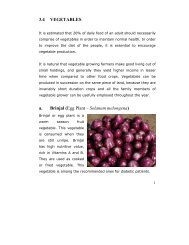Traditional Practices in Agriculture FULL - ANGOC Site
Traditional Practices in Agriculture FULL - ANGOC Site
Traditional Practices in Agriculture FULL - ANGOC Site
You also want an ePaper? Increase the reach of your titles
YUMPU automatically turns print PDFs into web optimized ePapers that Google loves.
5.3 Termites Control<br />
1. Termites destroy the seedl<strong>in</strong>gs <strong>in</strong> nursery raised <strong>in</strong> dry-land<br />
conditions. To control these, neem leaves, sheep wool and<br />
human hairs are put; termites feed<strong>in</strong>g on these materials will<br />
die due to rupture <strong>in</strong> their <strong>in</strong>test<strong>in</strong>es.<br />
2. Grow<strong>in</strong>g castor on the fields will control termites to some<br />
extent.<br />
3. Putt<strong>in</strong>g neem cake <strong>in</strong>side a gunny bag and plac<strong>in</strong>g it <strong>in</strong> the<br />
irrigation channel controls termites.<br />
4. Plant ‘Piradai’ (Cissus quadrangularis) v<strong>in</strong>es around the field<br />
to protect aga<strong>in</strong>st termites.<br />
5. Before plant<strong>in</strong>g tree seedl<strong>in</strong>gs, dried leaves and trashes are<br />
burnt <strong>in</strong> the pits to protect the root zone of crops from<br />
termites.<br />
6. Dust<strong>in</strong>g wood ash <strong>in</strong> the pits before plant<strong>in</strong>g tree seedl<strong>in</strong>gs<br />
also helps to prevent termites.<br />
7. Spr<strong>in</strong>kle 5% common salt solution to reduce termite attack<br />
on the trees.



